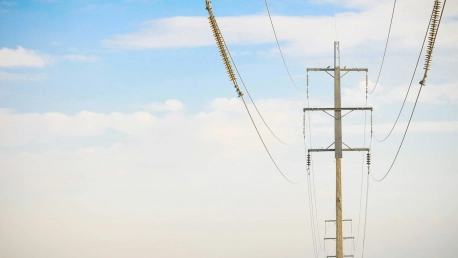Demand Response (DR) stands out as a key tool in bolstering energy grid stability and supporting the shift toward sustainable energy management. As we face the dual challenge of meeting energy needs and reducing environmental impact, DR offers a solution by encouraging adjustments in consumption patterns during peak periods. Users participating in DR programs voluntarily reduce or shift their energy use in response to grid demands or price signals. This not only helps in avoiding blackouts and reducing the strain on the grid but also plays a part in curbing greenhouse gas emissions by lessening the need for additional power plants. However, the adoption of DR is often hindered by misconceptions about its complexity and impact on comfort. In reality, modern technology enables seamless integration of DR with minimal disruption, offering financial incentives to participants and contributing to a more resilient energy system. As the importance of energy efficiency escalates, the role of DR is becoming indispensable, moving us closer toward a sustainable and stable energy future.
Understanding Demand Response
Demand Response is a system where consumers are incentivized to reduce their energy usage during peak times, thus aiding utilities in keeping a balanced energy supply-demand ratio. This proactive engagement allows for a more responsive and adaptable energy grid by drawing on consumer participation to offset potential strains. Participation in DR programs usually entails small behavior adjustments by consumers. Actions such as shifting appliance use away from peak times, adjusting thermostat settings, or simply turning off non-essential lights can collectively make a significant impact on energy conservation. These nuanced adjustments, while minor in isolation, aggregate into a notable decrease in demand, allowing utilities to manage their resources more effectively.The concept behind DR is not only about reacting to the immediate needs of the grid but also strategically planning energy consumption. Utilities, through various communication channels, can signal consumers in advance about anticipated peak demand periods. This heads-up enables both residential and commercial participants to adjust their energy usage patterns accordingly, thus preempting potential grid overload scenarios. Such a symbiotic relationship between energy providers and consumers fosters a level of grid reliability that is crucial in an era marked by volatile energy demands.
Advantages of Demand Response Programs
Demand response programs incentivize consumers to play an active role in energy management by financially rewarding them for decreasing their energy usage during peak times. These rewards reflect the cost savings that utilities experience by not having to generate or purchase additional power. While they are essential for energy conservation efforts, DR events are designed not to significantly disrupt participants’ daily routines. These events tend to be short and infrequent, often lasting just a few hours. The compensation for taking part addresses the minor inconveniences faced and aligns individual actions with the broader aim of maintaining grid stability. Thus, participants can support an efficient energy system while also benefiting financially without substantial interference in their everyday lives.
Dispelling the Myths of Demand Response
A common misconception is that participation in DR entails drastic lifestyle changes or can lead to significant disruptions in normal business operations. However, this is rarely the case. The adjustments required during DR events are typically minor and are communicated well in advance, allowing for seamless integration into regular operations. Furthermore, some express concerns regarding the complexity and alleged high financial risk associated with DR agreements. Contrary to this belief, the agreements are often straightforward, and when facilitated through experienced partners or aggregators, the process is highly automated, reducing the management burden on the participants.Aggregators play a pivotal role in simplifying the participation process. They provide a bridge between utilities and a group of consumers, handling the communication and management of DR events. Consequently, this relationship diminishes the perceived financial risk for individual participants. Partners take on the responsibility of responding to utility signals and adjusting the energy load accordingly, often using smart technology to automate the process. Through this setup, businesses and consumers can engage in DR initiatives with confidence, backed by the security that their interests and operational continuity are safeguarded.
Different Facets of Demand Response
Demand Response programs come in different shapes to serve various goals. Economic DR offers cash incentives to users who cut power use during peak times. This not only eases grid stress but also rewards participants monetarily. On the other hand, Automated Emergency DR relies on advanced systems to automatically decrease electricity consumption during critical periods. This happens without human input—enhancing efficiency and responsiveness. Environmental DR, another variant, nudges users towards using less energy during times when the grid may rely on more polluting energy sources. This assists in lowering carbon footprints.By participating in these DR programs, individuals and organizations can gain financial benefits and bolster their green credentials. As most grids turn to non-renewable energy during high demand, lowering consumption can lead to significant environmental benefits, aiding the march toward a greener and more sustainable energy landscape.
Case Studies and Corporate Participation
Businesses like Walgreens, by partnering with companies such as GridPoint, highlight Demand Response’s potential to enhance power grid stability while yielding economic gains. Automated DR programs are proving mutually beneficial; they provide operational advantages to both the electric grid and businesses. These real-world examples capture how DR helps conserve energy, drawing attention to its benefits for both grid reliability and the environment. By incorporating DR into company operations, a symbiotic relationship is forged between commerce, utility providers, and environmental sustainability.This narrative underscores DR’s importance in fostering a more sustainable future, promoting responsible energy use, and supporting a resilient power grid. Through DR, businesses can achieve a balance between economic success and ecological stewardship, demonstrating that smart energy management can be a win-win for all stakeholders.









